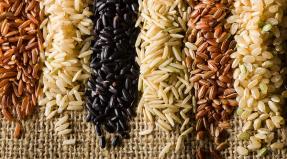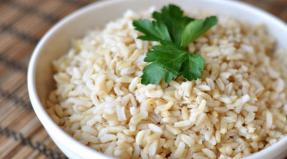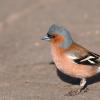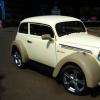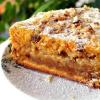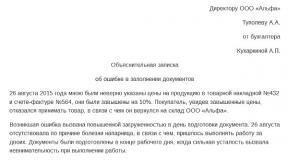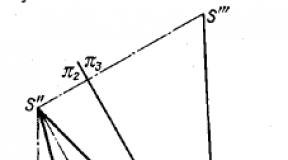Muscarine action on the body. Muscarine is an alkaloid from mushrooms. Symptoms and stages of poisoning
The fact that the fly agaric mushroom is poisonous, we know from childhood. All the poisons that it contains have not yet been studied, but the very first toxin obtained from poisonous mushrooms is muscarine. It was opened in 1868. However, then it was impossible to talk about pure muscarine, such drugs were obtained only in the 20th century.
There is muscarine in fly agarics, but there is very little of it.
Where is muscarine found
It is often said that muscarine contains fly agaric mushroom. However, this is an erroneous conclusion. There is indeed muscarine in fly agarics, but there is very little of it. Therefore, for the symptoms of poisoning that appear in those who have eaten this mushroom, not only muscarine is responsible, but also other toxins that it contains (muecitol, ibotenic acid, etc.). Thus, a raw mushroom contains 0.0003–0.0016% muscarine, and to obtain this alkaloid in an amount of 0.25 g, 125 kg of fly agaric are needed. To kill a person, you need 0.5 g of muscarine.
Also, this alkaloid is found in such poisonous mushrooms as a govorushka, a bleached govorushka, a luminous govorushka, a torn fibre, an earthen fiber. Under special conditions, the poison contains a fungus such as a pig. Not every mushroom is poisonous, usually it is an old thin pig. But scientists could not determine the exact amount of poison.

Muscarine is found in the ruptured fiber
About muscarine
This poisonous alkaloid was discovered by Schmiderberg. Muscarine derived from mushrooms is called natural muscarine. This alkaloid is odorless, tasteless and similar to syrup. If this poison is heated to a temperature of 100 degrees, it collapses. At this point, there is a noticeable smell of tobacco. Schmiderberg proved that if this alkaloid is obtained artificially, then it is not similar in its properties to the natural one.
The sensitivity of different animals to muscarine is different. If a cat is injected subcutaneously with this poison at a dose of 4 mg, then it will die in a few hours. A dose of 12 mg will kill her in 10-15 minutes. Dogs have a higher tolerance for poison. Scientists have also found that the human body tolerates this poison well. Koppe and Schmiderberg injected themselves with this poison at a dose of 3 mg. They found that even in such quantities it causes poisoning. How it manifests itself:
- saliva flows strongly;
- blood rushes to the head;
- weakness;
- dizziness;
- be sick;
- I have a stomachache;
- the skin becomes red;
- visual disturbances;
- sweat flows, especially on the face.

Isomuscarin affects the heart rate, slows it down
In medicine, this alkaloid has not found application. This alkaloid contained in poisonous mushrooms was wanted to be used to cure cancer and epilepsy, ulcers, but it was considered too dangerous. Anhydromuscarine does not affect the heart and eyes, but it does cause sweat and drool. The person dies due to respiratory paralysis. Isomuscarin affects the heart rate, slows it down, but does not stop the heart, does not affect the eyes of mammals and the intestines.
Action of the poison
If this poison is introduced into the body in small doses, this poison slows down cardiac activity, and in large doses, the heart stops from it. Scientists have also found that this poison has a paralytic effect. Under its influence, the pupil of the eye is greatly narrowed. It increases the secretion of saliva, sweat and tears.
The main effect of this poison is paralysis of the respiratory tract and nerves. It also causes a strong contraction of the muscles of the intestines and stomach. This contraction is visible to the naked eye. The abbreviations also apply to other organs. In its pure form, this alkaloid does not act on the central nervous system, only on the peripheral, poisoning does not cause hallucinations.

Anhydromuscarin leads to respiratory paralysis
Symptoms of poisoning
It is impossible to poison yourself with pure muscarine, because this poison is not used in medicine. Therefore, the only source from which the alkaloid enters the human body and causes poisoning is the eaten mushroom. The picture of poisoning may be similar to that described above or differ from it, since the fly agaric mushroom contains other toxic substances. They sometimes stop the action of muscarine. Symptoms of poisoning appear 0.5 - 2 hours after the poison has entered the body.
Therefore, a person who has been exposed to poisons either suffers from pain, diarrhea, nausea, vomiting. But sometimes the fungus acts differently: it becomes very intoxicated. Then the following symptoms make themselves felt:
- excitement accompanied by delirium;
- dizziness;
- sweat, saliva, tears flow;
- a person has a desire to destroy everything;
- he wants to move a lot, break everything, destroy;
- then tremors pass through his body, convulsions, pupils dilate, breathing is disturbed, body temperature drops and a collapse develops in a person.
The lethal amount of alkaloid for humans is 0.5 - 0.7 g, which is usually contained in 3-4 kg of fresh red fly agaric. There are cases when these mushrooms caused hallucinations. But they are not related to the action of muscarine, because. this poison does not affect the central nervous system, they are caused by other poisons. And the action of psilocybin mushrooms is precisely that they cause visions.

If a person has tried psilocybin poisonous mushrooms, i.e. bluish conosib, hay dung beetle, prominent flakes, etc., popular hallucinogens, then the symptoms of poisoning will be different. They reach a maximum after 4 hours. A person has hallucinations, visual illusions, anxiety, agitation, etc. All these symptoms disappear after 6-12 hours.
First aid
If there was poisoning with this poison, you should immediately call an ambulance. Until the doctor arrives, it is necessary to remove the poison from the body.
- Induce vomiting. For this, the patient drinks 3-4 tbsp. water. Then you need to press your fingers on the tongue, its root, to induce vomiting. Then the poison will be washed out of the body. Repeat this procedure several times until clean water comes out.
- We give laxatives. Take a laxative. A safe remedy is castor oil.
- Drink sorbents. Now drink activated charcoal.
Treatment
If it is definitely established that poisoning with this alkaloid has occurred, the treatment is the introduction of an antidote. The most popular antidote is the alkaloid atropine, although there are others: camphor, aconitine, veratrin, etc. After the gastrointestinal tract has been cleaned, atropine is injected subcutaneously. Then infusion therapy is possible. If the patient has oxygen deficiency, then doctors perform artificial ventilation of the lungs.
But atropine is not a universal remedy. If a fly agaric or other mushroom has been eaten, doctors must make sure that this is indeed muscarinic intoxication, and other poisons do not affect the person. Only then is the poisoning treated with an antidote.
- . What drugs can be used?
Muscarine is a naturally occurring alkaloid found in some poisonous mushrooms.. Despite the strong toxicity of the chemical compound, traditional healers use fly agaric tincture to treat cancer. From these mushrooms, people with drug addiction prepare solutions that cause euphoria and hallucinations. So muscarine poisoning is not uncommon. In case of an overdose or a fatal mistake when picking mushrooms, intoxication develops, sometimes ending in the death of a person.
Characteristics of muscarine
The structure of the toxin has not yet been established, so chemists use the empirical formula of natural muscarine. Alkaloid is a thick liquid of neutral odor and taste with basic PH values. If, after drying, a few drops of any inorganic acid are added to the dry mixture, a violent chemical reaction will occur. Its result will be the formation of small colorless crystals of muscarine, unstable in the open air. It only takes a few minutes for the alkaloid to lose its solid form and take on a syrupy appearance.
An interesting fact is that muscarine synthesized in the laboratory is significantly different from that found in fly agaric. When conducting experiments on amphibians, the identity of artificial and natural alkaloids was not established.
Muscarine is able to quickly dissolve in aqueous and alcohol-containing liquids., but in ethers it is absolutely insoluble. A toxic substance manifests itself in the process of chemical reactions as follows:
- At the boiling point of water, the alkaloid decomposes with the formation of a faint aroma of tobacco smoke.
- When liquid muscarine is treated with lead oxide or a strong base, a tertiary amine is formed, which is flammable and hygroscopic.
- Sulfuric and hydrochloric acid hydrolyze the alkaloid, turning it into colorless crystals.
Scientists have been trying to isolate natural muscarine since the beginning of the last century. Poisonous compounds were obtained from the urine of rabbits, cats, as well as the decaying corpse of saffron cod. But they are all just isomers of the mushroom muscarine. This does not prevent us from combining all alkaloids into one group and not abandoning attempts to synthesize an artificial toxin that would be a complete analogue of fly agaric poison.
Importance of muscarine for medicine and toxicology
 Natural mushroom alkaloids, like synthetic ones, are not used for the treatment of diseases. In pharmacology, medicine, toxicology research is underway on muscarine for possible use as a drug. Several decades ago, doctors tried to use a toxic compound to relieve the symptoms of epilepsy, benign and malignant neoplasms.
Natural mushroom alkaloids, like synthetic ones, are not used for the treatment of diseases. In pharmacology, medicine, toxicology research is underway on muscarine for possible use as a drug. Several decades ago, doctors tried to use a toxic compound to relieve the symptoms of epilepsy, benign and malignant neoplasms.
Weak dilutions of muscarine were previously used to treat inflammatory eye pathologies, gland tumors, and trophic ulcers. But the frequent occurrence of poisoning nullified such attempts to treat diseases.
The alkaloid belongs to the type of parasympathicotropic toxins. This group of poisons has a stimulating effect on the peripheral nervous system, showing a selective effect. Rare ability opens up great prospects for further study of the physicochemical properties of muscarine, its possible use in the treatment of various pathologies.
The toxic compound is used in experimental studies to study the functional activity of cholinergic processes, the structure of cholinergic receptors. After the introduction of small doses of the alkaloid, amphibians were diagnosed with a heart rhythm disorder. If the amount of poison used was above the average, then the systolic contractions first slowed down and became weaker. And the diastolic phase was characterized by complete cardiac arrest. Muscarine isolated from mushrooms has the following properties:
- increases the secretion of bile, increases the separation of pancreatic juice;
- activates the glands located in the gastrointestinal tract;
- increases the activity of the salivary, sweat and lacrimal glands.
Muscarine irritates the nerve endings, provoking an increased work of any gland. The study of the alkaloid allowed scientists to synthesize an effective antidote. With the introduction of an antidote at various stages of poisoning, a complete recovery of the victims was noted.
How can you get poisoned with muscarine
 When collecting and processing mushrooms, you should be extremely careful. Of course, a bright large fly agaric is difficult to confuse with other representatives of the mushroom kingdom. But red-capped fruiting bodies are not the main sources of muscarine. The combination of several poisons, which they use to kill harmful insects and slugs, gives fly agarics a special toxicity.
When collecting and processing mushrooms, you should be extremely careful. Of course, a bright large fly agaric is difficult to confuse with other representatives of the mushroom kingdom. But red-capped fruiting bodies are not the main sources of muscarine. The combination of several poisons, which they use to kill harmful insects and slugs, gives fly agarics a special toxicity.
Fans of quiet hunting often get poisoned when collecting conditionally edible mushrooms containing muscarine. Some forest gifts accumulate a large amount of poison in the autumn period, without having a toxic effect on the human body at other times.
In addition to the red and panther fly agaric, muscarine is found in the following mushrooms:
- Various types of fibres.
- Cracking speaker.
- The speaker is whitish.
- Pink mycena.
A large amount of muscarine was found in the composition of fungi belonging to the cobweb family, especially in hebeloma and moth. Preparation of forest gifts by dry salting, without preliminary heat treatment, is extremely dangerous. Any of the above mushrooms, hitting a tub with edible fruiting bodies in a single copy, will provoke acute muscarinic poisoning.
Toxicologists have long warned about the presence of high doses of alkaloid in tasty pigs. The insidiousness of these mushrooms lies in the ability of mature specimens to accumulate muscarine in significant concentrations. When using a fat pig, doctors often diagnose poisoning, the main symptom of which is a violation of the intestines.
Mechanism of natural alkaloid poisoning
 Since the alkaloid belongs to amines, it does not have the ability to penetrate the blood-brain barriers (the physiological barrier between the bloodstream and the central nervous system). Muscarine has no damaging effect on the central nervous system, but it provokes a decrease in the functional activity of peripheral nerve endings. Under its influence, cholinergic receptors, called M-receptors, or muscarinic receptors, are selectively excited. After increasing their activity:
Since the alkaloid belongs to amines, it does not have the ability to penetrate the blood-brain barriers (the physiological barrier between the bloodstream and the central nervous system). Muscarine has no damaging effect on the central nervous system, but it provokes a decrease in the functional activity of peripheral nerve endings. Under its influence, cholinergic receptors, called M-receptors, or muscarinic receptors, are selectively excited. After increasing their activity:
- blood vessels dilate (veins, arteries, capillaries);
- there is a spasm of smooth muscles;
- heart contractions slow down.
In case of poisoning with significant doses of alkaloid the rhythm is so weakened that there is a complete cardiac arrest.
Intoxication with muscarine is accompanied by a strong spasm of smooth muscle fibers. This is especially noticeable in a person with a lack of body weight: in the abdomen, undulating, chaotic movements are visible during peristalsis.
Intestinal contractions are especially dangerous for pregnant women, as they can provoke a miscarriage in any trimester. Therefore, gynecologists recommend that when carrying a child and during lactation, refuse to eat dishes with mushrooms. Fruiting bodies with muscarine, which are conditionally edible species, are especially dangerous.
Symptoms of muscarinic poisoning
Signs of fly agaric intoxication resemble the symptoms of poisoning with m-cholinomimetics, including muscarine. But there are differences, because these mushrooms contain other toxic compounds that have properties similar to atropine. Such poisons are able to stop the nerve-destroying action of muscarine and cause their characteristic signs.
The combination of symptoms of atropine and muscarine in fly agaric poisoning leads to a characteristic clinical picture. The victim in the body partially loses the ability to clot blood, which can cause internal hemorrhage.
 After eating mushrooms containing exclusively muscarine, a person develops symptoms of poisoning with this alkaloid. The excitatory effect of a toxic substance on smooth muscle fibers causes a strong contraction of the gastric wall, spleen, middle membrane of the bladder. Ingestion of even a small dose of muscarine provokes the following signs of poisoning:
After eating mushrooms containing exclusively muscarine, a person develops symptoms of poisoning with this alkaloid. The excitatory effect of a toxic substance on smooth muscle fibers causes a strong contraction of the gastric wall, spleen, middle membrane of the bladder. Ingestion of even a small dose of muscarine provokes the following signs of poisoning:
- Hyperthermia develops, which provokes a feverish state, chills, cold perspiration.
- The work of the gastrointestinal tract is disrupted. The victim develops nausea, and then vomiting opens. At low doses of muscarine, a person suffers from sour belching, flatulence, bloating, pain in the epigastric region, and a feeling of bitterness in the mouth.
- This type of poisoning is characterized by diarrhea and involuntary bowel movements.
- Visible symptoms include a bright blush, profuse sweating, pale and dry skin, dilated pupils.
- The heart rate slows down, the pulse becomes thready, breathing is shallow and labored.
- The work of the urinary system is disrupted, the urine becomes dark in color and has an unpleasant odor.
- The resulting slight arterial hypertension is replaced by a sharp drop in pressure to the lowest readings. Perhaps the development of collapse due to a decrease in the volume and speed of circulating blood.
After 20 minutes of the first development of poisoning, the victim develops a tremor of the lower and upper extremities, turning into intense convulsions. A person experiences anxiety, fear, dizziness, drowsiness. After half an hour, coordination of movements is disturbed, tendon and muscle reflexes are reduced.
An important symptom of poisoning is a spasm of accommodation, causing false myopia - a temporary visual impairment. A victim of muscarine cannot distinguish objects that are at arm's length from him. Women who are breastfeeding begin to leak milk.
The cause of death from muscarine intoxication is always respiratory failure and cardiac arrest. A coma in the absence of treatment lasts 1-2 days, and then the person dies. If the dose of the toxic substance was insignificant, then the prognosis for complete recovery is favorable.
First aid for poisoning
 The lethal dose of muscarine is 0.5 g. If even minor symptoms of poisoning occur, an ambulance should be called immediately. Before the arrival of the doctor, it is necessary to alleviate the condition of the victim by taking the following measures of assistance:
The lethal dose of muscarine is 0.5 g. If even minor symptoms of poisoning occur, an ambulance should be called immediately. Before the arrival of the doctor, it is necessary to alleviate the condition of the victim by taking the following measures of assistance:
- lay the person on his side, calm;
- induce vomiting with a pale pink solution of potassium permanganate until clean water is discharged from the stomach;
- give the victim drugs that bind toxins: adsorbents or enterosorbents.
Muscarine will bind strong sweet tea well, as it contains a lot of tannin. The doctor, if necessary, hospitalizes the patient, administers an antidote to him, puts a dropper with solutions of salts and glucose. You can not carry out self-treatment with the use of antispasmodics or diuretics. Ignorance of the mechanisms of poisoning will lead to serious complications, death of a person.
Muscarine is one of the most poisonous alkaloids. It is contained in mushrooms, and was first isolated from the well-known fly agaric.
This is an extremely toxic substance, just one gram of which can be fatal. Therefore, it is so important to know what muscarine is, how poisoning with this substance manifests itself, and how the victim can be helped.
The first source of muscarine was the common red fly agaric, widespread in Europe and Siberia. Today, in laboratory experiments, both natural muscarine and artificial, obtained from choline, are used. The action of these two toxins is slightly different, but both are deadly to humans.
Natural muscarine, a mushroom alkaloid, is extracted from raw, freshly harvested fly agaric using ordinary ethyl alcohol, in which the substance is easily soluble. It is also soluble in water. The finished toxin looks like a colorless liquid, viscous, without a characteristic odor.
When dried over sulfuric acid, it easily crystallizes, and after returning to air, it again becomes a liquid. When heated to 100ºС, muscarine is destroyed. Contact with alkalis and lead oxide can also destroy it.
Despite the obvious toxicity of muscarine and the presence of other toxins in fly agaric, some peoples traditionally prepare drugs and narcotic drinks from these mushrooms. Until the end of their action has not yet been studied.
Where is muscarine
In the natural environment, muscarine is found only in mushrooms. Its most famous source is the red fly agaric. But there is very little of this poison in it. Many fly agarics do not contain this toxin at all and are even considered edible. And the record holders for the content of muscarine are fiber and whitish talker.
In total, there are 150 types of fiber and muscarine is far from all. And seven species are hallucinogens, as they contain psilocycin.
Muscarine can also be found in conditionally edible pig mushrooms. The exact concentration of the substance in them is not known, since the toxin is not found in all individuals.
Muscarine accumulates only in old mushrooms, and young ones are often edible and quite safe. But this does not mean at all that they should be collected and eaten, the risk always remains.
Once in the body, this toxin acts on special cholinergic receptors, which are called muscarinic receptors. They are responsible for the contraction and functioning of smooth muscles, such as vasoconstriction and dilation.
They also control the heart rate, the secretion of some glands. Therefore, very high doses of muscarine can even provoke cardiac arrest - it relaxes and simply remains in this state.

In parallel with the effect on the cardiovascular system, the activation of muscarinic receptors provokes a strong contraction of the smooth muscles of the intestine. Very strong spasms begin, which can be seen even through the abdominal wall. This causes vomiting and diarrhea. At the same time, the spleen, uterus and bladder are also reduced, and the secretion of bile and pancreatic juice is increased.
Artificial muscarine, unlike natural muscarine, can also cause paralysis by affecting the motor nerves. But none of the toxins has practically no effect on the central nervous system, since it cannot penetrate the blood-brain barrier. Therefore, until some time, a person remains conscious and has a sober memory.
How does muscarine poisoning manifest itself?
Signs of poisoning with pure muscarine and poisonous mushrooms containing this substance can be very different. This is due to the fact that toadstools also contain other toxins that can cause new symptoms, enhance or block the action of muscarine directly. Therefore, the use of fly agaric almost never gives a clinical picture of muscarine poisoning.
By the way, in order to get a lethal dose of muscarine from red fly agaric, you will have to eat about 3-4 kg of freshly picked mushrooms without heat treatment, since the substance decomposes under the influence of high temperature. Few people are capable of such a "feat".
The rate of manifestation of muscarine poisoning depends on the dose received. Usually, the first signs appear approximately 0.5-2 hours after the toxin enters the body. The main symptoms include:
- Strong and rapid constriction of the pupils and the development of false (reversible) myopia, which leads to a spasm of accommodation;
- Uncontrolled salivation and lacrimation, severe sweating;
- Sharp twisting pains in the abdomen, accompanied by vomiting and diarrhea;
- Trembling in the body and convulsions (in case of poisoning with piece muscarine);
- Rapid decrease in blood pressure;
- Difficulty breathing.
With very severe poisoning, a collapse can occur, provoked by a sharp drop in vascular tone.
How to provide first aid for muscarine poisoning
If you suspect muscarine poisoning, you should immediately call the doctors, and then you can try to provide first aid to the victim:
- Try to wash the stomach, removing the remnants of the toxic substance from it. To do this, you need to seat the victim and give him a few glasses of non-cold salted water to drink. Then we induce vomiting by pressing on the base of the tongue or by tickling the back of the throat. Repeat this procedure until the water starts to enter clean.
- Take a bowel cleansing laxative if it hasn't already happened on its own. You can also use an enema.
- Drink activated charcoal or any other sorbent except Smecta, which has the ability to stop diarrhea.
Painkillers, antispasmodics and other drugs should not be taken, as they distort the clinical picture and make it difficult to make a diagnosis.
After first aid is provided, and the stomach and intestines of the victim are cleaned, the treatment of poisoning begins in the hospital.

Doctors usually take the following steps:
- Subcutaneous administration of atropine. It is an antidote to muscarine, an alkaloid found in some plants, such as nightshade or datura. After the administration of atropine, the increased activity of the glands and abdominal cramps cease.
- Purification of the toxin from the blood by intravenous administration of a glucose solution or other suitable liquid.
- In case of respiratory failure, an oxygen mask or a ventilator may be used.
- Caffeine and camphor are used to stimulate cardiac activity.
Atropine is not used in all cases, but only if the symptoms of muscarinic intoxication prevail over others. If the effect of other fungal toxins that have entered the body is stronger, the principles of treatment change. In addition, there are other antidotes for muscarine - these are hyoscyamine, veratrin, aconitine, digitalin, physostigmine, chloral hydrate.
The prognosis for poisoning with mushroom muscarine is quite favorable. Under the conditions of timely and competent treatment, recovery occurs already on the second or third day. Only with the most severe poisoning does respiratory failure develop, which can lead to death.
Importance of muscarine for medicine and pharmaceuticals
After the isolation of pure muscarine, attempts were made to use it to treat eye diseases and epilepsy, gland tumors and ulcers. But over time, these experiments were recognized as unsuccessful and stopped due to the high toxicity of the test substance. Muscarine is not used in modern medicine.
Today it is used only in theoretical studies. This toxin acts on peripheral parasympathicotropic nerves and therefore replaces electrical stimulation in animal experiments. Such experiments are necessary for the development of drugs and the search for new methods of treatment.
(C)(C)C]
Impact on the nervous system
Muscarine selectively excites cholinergic receptors located on the postsynaptic membranes of cells of various organs at the endings of postganglionic cholinergic nerves. That is why such receptors are called M-receptors, or muscarinic receptors. Substances that excite such receptors are called muscarinic, or M-cholinomimetics, and substances that inhibit their activity are called M-cholinergic blockers. A characteristic representative of M-anticholinergics is atropine.
Application
Muscarine has not found application in medical practice. It is used only in experimental studies in the study of the structure and function of cholinergic receptors and cholinergic processes.
Toxicological significance
The toxicological significance of muscarine lies primarily in poisoning by the fungi that contain it. Such poisonings are characterized by the so-called muscarinic syndrome: hypersalivation (increased salivation), sweating, vomiting, diarrhea, bradycardia, slight pupillary constriction, blurred vision, increased peristalsis. In severe cases, collapse occurs, respiratory failure, pulmonary edema. Symptoms of poisoning occur 0.5-2 hours after taking muscarine or muscarine-containing mushrooms. The lethal dose of muscarine for humans is 0.525 grams, which are contained in 4 kilograms of fresh red fly agaric. Regular use can cause drug addiction.
Treatment of muscarine poisoning
Help with muscarine poisoning consists in removing the poison from the gastrointestinal tract (by washing the stomach and taking adsorbents), reducing its concentration in the blood (infusion therapy). As an antidote, atropine and other M-anticholinergics are used. There may also be indications for the use of adrenomimetics or glucocorticoids.
Write a review on the article "Muscarine"
Notes
Literature
- // Encyclopedic Dictionary of Brockhaus and Efron: in 86 volumes (82 volumes and 4 additional). - St. Petersburg. , 1890-1907.
|
||||||||||||||||||||||||||||||||||||||||||||||||||
| This article about organic matter is a stub. You can help the project by adding to it. |
An excerpt characterizing Muscarine
Sonya reluctantly answered something.- No, look at that moon! ... Oh, what a charm! You come here. Darling, dove, come here. Well, see? So I would squat down, like this, I would grab myself under my knees - tighter, as tight as possible - you have to strain. Like this!
- All right, you're going to fall.
There was a struggle and Sonya's dissatisfied voice: "After all, the second hour."
Oh, you're just ruining everything for me. Well, go, go.
Everything fell silent again, but Prince Andrei knew that she was still sitting there, he sometimes heard a quiet stir, sometimes sighs.
- Oh my god! My God! what is it! she suddenly cried out. - Sleep like sleep! and slammed the window.
“And it doesn’t matter to my existence!” thought Prince Andrei while he listened to her conversation, for some reason waiting and fearing that she would say something about him. “And she again! And how on purpose! he thought. Such an unexpected confusion of young thoughts and hopes, which contradicted his whole life, suddenly arose in his soul, that he, feeling unable to understand his state of mind, immediately fell asleep.
The next day, having said goodbye to only one count, without waiting for the ladies to leave, Prince Andrei went home.
It was already the beginning of June, when Prince Andrei, returning home, drove again into that birch grove in which this old, gnarled oak struck him so strangely and memorable. The bells rang even more muffled in the forest than a month and a half ago; everything was full, shady and dense; and young spruce trees scattered throughout the forest did not disturb the general beauty and, imitation of the general character, tenderly turned green with fluffy young shoots.
The whole day was hot, somewhere a thunderstorm was gathering, but only a small cloud splashed on the dust of the road and on the succulent leaves. The left side of the forest was dark, in shadow; the right one, wet and glossy, shone in the sun, slightly swaying in the wind. Everything was in bloom; the nightingales chirped and rolled now close, now far away.
“Yes, here, in this forest, there was this oak, with which we agreed,” thought Prince Andrei. “Yes, where is he,” thought Prince Andrei again, looking at the left side of the road and without knowing it, not recognizing him, admired the oak he was looking for. The old oak, all transformed, spread out like a tent of juicy, dark greenery, was thrilled, slightly swaying in the rays of the evening sun. No clumsy fingers, no sores, no old mistrust and grief - nothing was visible. Juicy, young leaves broke through the tough, hundred-year-old bark without knots, so that it was impossible to believe that this old man had produced them. “Yes, this is the same oak tree,” thought Prince Andrei, and a causeless, spring feeling of joy and renewal suddenly came over him. All the best moments of his life were suddenly remembered to him at the same time. And Austerlitz with a high sky, and the dead, reproachful face of his wife, and Pierre on the ferry, and the girl, excited by the beauty of the night, and this night, and the moon - and all this suddenly came to his mind.
“No, life is not over at the age of 31, suddenly, Prince Andrei decided completely, without change. Not only do I know everything that is in me, it is necessary that everyone knows this: both Pierre and this girl who wanted to fly into the sky, it is necessary that everyone knows me, so that my life goes not for me alone so that they do not live so independently of my life, so that it is reflected on everyone and that they all live with me together!
Returning from his trip, Prince Andrei decided to go to Petersburg in the fall and came up with various reasons for this decision. A whole series of reasonable, logical arguments why he needed to go to Petersburg and even serve, was every minute ready for his services. Even now he did not understand how he could ever doubt the need to take an active part in life, just as a month ago he did not understand how the idea of leaving the village could come to him. It seemed clear to him that all his experiences in life must have been lost in vain and be nonsense if he had not put them to work and had not again taken an active part in life. He did not even understand how, on the basis of the same poor rational arguments, it had previously been obvious that he would be humiliated if now, after his lessons in life, he would again believe in the possibility of being useful and in the possibility of happiness and love. Now my mind was telling me something else. After this trip, Prince Andrei began to get bored in the countryside, his previous activities did not interest him, and often, sitting alone in his office, he got up, went to the mirror and looked at his face for a long time. Then he turned away and looked at the portrait of the deceased Lisa, who, with curls a la grecque [in Greek] fluffed up, tenderly and cheerfully looked at him from a golden frame. She no longer spoke the former terrible words to her husband, she simply and cheerfully looked at him with curiosity. And Prince Andrei, with his hands folded back, paced the room for a long time, now frowning, now smiling, rethinking those unreasonable, inexpressible in words, secret as a crime thoughts connected with Pierre, with fame, with the girl at the window, with the oak, with female beauty and love that changed his whole life. And at those moments when someone came to him, he was especially dry, sternly resolute, and especially unpleasantly logical.
